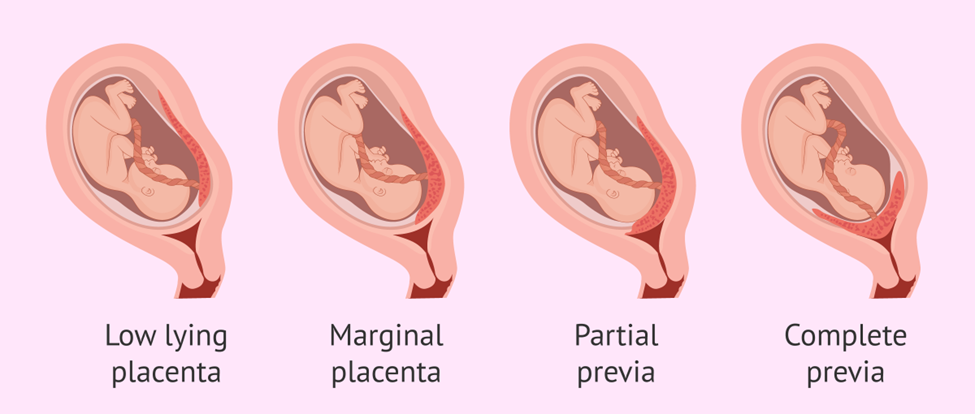A client who has a diagnosis of complete placenta previa is admitted to the labor and
delivery suite at 36 weeks gestation with contractions 5 minutes in frequency and 1 minute in duration. Which of the following actions should the nurse take?
Rupture the amniotic sac.
Medicate the client for pain.
Prepare the client for a cesarean section.
Perform a vaginal exam.
The Correct Answer is C
A. Rupturing the amniotic sac in the case of complete placenta previa can lead to significant bleeding and is contraindicated.
B. Pain medication may be administered if needed, but the priority is to address the placenta previa and potential complications.
C. Complete placenta previa at 36 weeks gestation with contractions and bleeding is a clear
indication for an emergency cesarean section to prevent maternal hemorrhage and fetal distress.
D. Performing a vaginal exam can increase the risk of bleeding and should be avoided in cases of placenta previa.

Nursing Test Bank
Naxlex Comprehensive Predictor Exams
Related Questions
Correct Answer is A
Explanation
A.
A. Visible contusions on all four extremities may indicate physical abuse, especially in the context of being brought to the emergency department by a family member. Reporting the
incident to Adult Protective Services is essential to ensure the safety and well-being of the client.
B. Interviewing the client with his adult child present may not be appropriate if there are concerns about potential abuse or coercion.
C. Forcing the client to answer every assessment question may not be appropriate if the client is in distress or unable to communicate freely.
D. Advising the client to consult a social worker may be appropriate, but reporting suspected abuse to Adult Protective Services is the priority action in this situation.
Correct Answer is A
Explanation
A. Hypotension occurs because hypermagnesemia causes vasodilation, which lowers blood pressure. Magnesium acts as a smooth muscle relaxant, decreasing vascular resistance and contributing to hypotension. This is a common clinical finding when magnesium levels exceed the normal range.
B. Tachycardia is not expected with hypermagnesemia. Elevated magnesium levels depress the heart's electrical activity, leading to bradycardia (slow heart rate) instead of tachycardia.
C. Muscle cramps are typically associated with hypomagnesemia, which increases neuromuscular excitability. In hypermagnesemia, neuromuscular function is suppressed, leading to muscle weakness rather than cramps.
D. Hyperreflexia is a symptom of hypomagnesemia, not hypermagnesemia. In hypermagnesemia, neuromuscular activity is depressed, resulting in diminished or absent deep tendon reflexes
Whether you are a student looking to ace your exams or a practicing nurse seeking to enhance your expertise , our nursing education contents will empower you with the confidence and competence to make a difference in the lives of patients and become a respected leader in the healthcare field.
Visit Naxlex, invest in your future and unlock endless possibilities with our unparalleled nursing education contents today
Report Wrong Answer on the Current Question
Do you disagree with the answer? If yes, what is your expected answer? Explain.
Kindly be descriptive with the issue you are facing.
